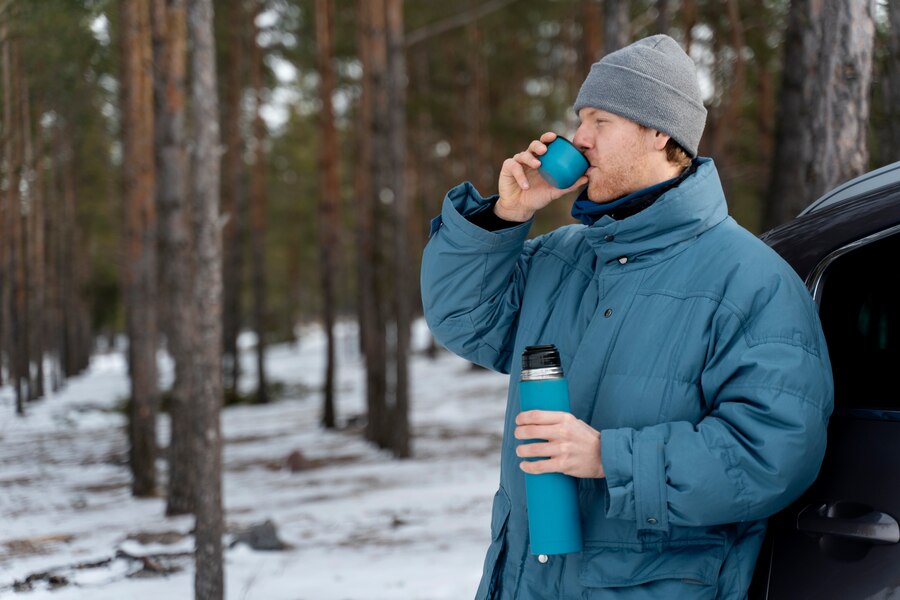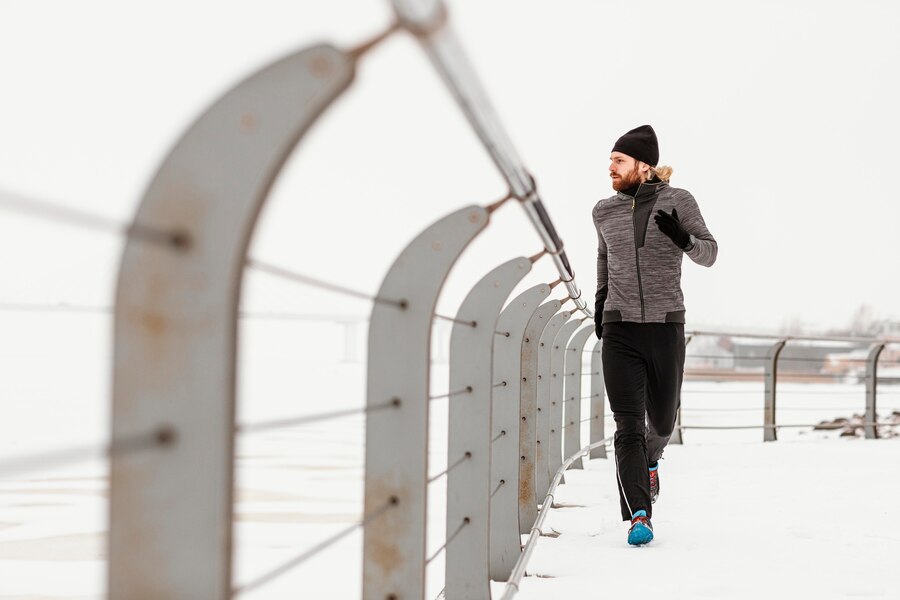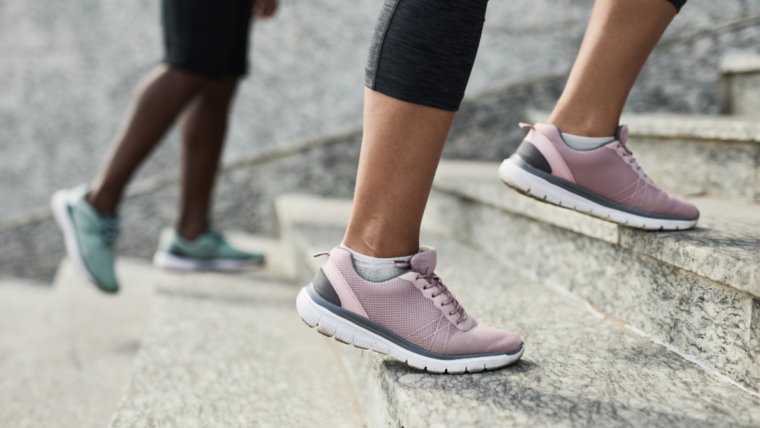As fall transitions into winter, many avid runners are faced with the challenge of having to adjust their running routine to stay safe and comfortable in cold weather.
While some may turn to the treadmill for indoor training, others might prefer a winter run outdoors. Either option can have its advantages and disadvantages.
If you’re one of those brave hearts who still wants to take on the outdoors this winter season, then reading through these 5 cold-weather running tips is just for you!
Read on to get tips on how your warm-up routine should look during colder times, and what to do to up your running game in the winter:
Related Blogs:
1. Keep An Eye On The Forecast

Bright days that stay in the 30-degree range are ideal for jogging; however, days, when the temperature drops to the single digits or drops below zero with a bitter windchill, may be indicators to stay indoors for the day.
So, keeping an eye on the forecast before getting going could be an ingenious running tip for cold weather to stay safe and comfortable.
It’s important to take wind seriously, especially in the winter. In addition to causing damage on its own, the cold wind can also make you sweat, which is beneficial during the hot summer but can swiftly result in hypothermia during the winter.
You shouldn’t be prevented from going outside by snow or other cold weather. However, if blizzard conditions are predicted or visibility will be considerably reduced, wait until the weather clears up before venturing outside.
Keep an eye out for snowplows, and wear fluorescent clothes so that you can be seen, especially if you’re a road runner.
2. Prioritize Warm-Up & Know Your Threshold

Prioritizing warm-up and knowing your threshold is the best cold-weather running hack to make it successful.
Avoid frostbite and hypothermia by dressing for the weather and paying attention to the temperature and wind chill. A runner’s tolerance for the cold varies from person to person.
You should ease into running in the cold by doing it on milder days and gradually increasing the time you spend outside in order to acclimate and fine-tune your layering strategy. Moreover, it’s in your best interest to recognize your limits and stop running outside when it becomes too cold to continue.
If the weather changes or you start to experience symptoms of hypothermia or frostbite, stop immediately.
Related Article: Post Run Stretches
3. Take A Nose-Only Breath

Breathing via your nose is crucial when it’s icy outside, and that’s the best breathing tip for winter runners.
Our nostrils filter out any dust and grime while also warming and moisturizing the chilly air. In addition, it’s important to breathe through your nose both when inhaling and exhaling because your breath moistens and heats the mucous membranes as you exhale.
On the other hand, you are depriving those membranes of both heat and moisture if you simply breathe in through your nose. Yet, some runners have superior nasal breathing than others, as this is greatly influenced by the structure of the nose.
A smaller nose with narrower nostrils will pull in less air with each breath, cause too much resistance, overwork the respiratory muscles, and make you feel out of breath.
If that applies to you, you ought to breathe through your lips as well.
4. Get Your Mouth & Nose Covered
During running, some people experience issues with the cold air. Dry, cold air can be irritating to the respiratory system.
By capturing moisture and somewhat warming the air before you breathe it in, running with a light scarf or buff covering your lips and nose is beneficial. Special face masks with Velcro fasteners are available at sporting goods retailers. If not, just wear a thin scarf.
Interestingly, because there is more moisture in the air when it is foggy, some runners with delicate respiratory systems choose to run in those conditions. Yet, mist also more effectively absorbs dirt and dust, which aggravates the airways even more.
Running in the mist is therefore not such a clever tactic, especially not for individuals who have respiratory tract irritations.
So, you better get your mouth and nose covered with the best possible option to make your winter running safe and secure.
5. Up Your Water Intake

If you are searching for the safest way to cold run, we suggest you stay hydrated all the time.
Hydration during winter runs can be more challenging than during the hot summer months, when you’ll want to drink water by the gallon.
Despite the fact that it’s not very pleasant to gulp down ice water when the temperature outside is well below freezing, your body actually loses more moisture through its breath in the winter due to increased evaporation in the dry, cold air.
Pre-hydrating is a great cold-weather running tactic to improve your running form, and it’s a smart idea year-round, too.
As a preventative measure against becoming dehydrated before a run, try drinking a cup of warm water or a warm hydrating beverage like herbal tea or a sports drink before bed and before lacing up your running shoes.
Final Thoughts
Now that you’re prepared to take on the cold weather, get out there and enjoy your runs.
Remember to dress in layers, keep your extremities covered, and be aware of changing weather conditions.
With these five cold-weather running tips, you’ll be ready to run all winter.




